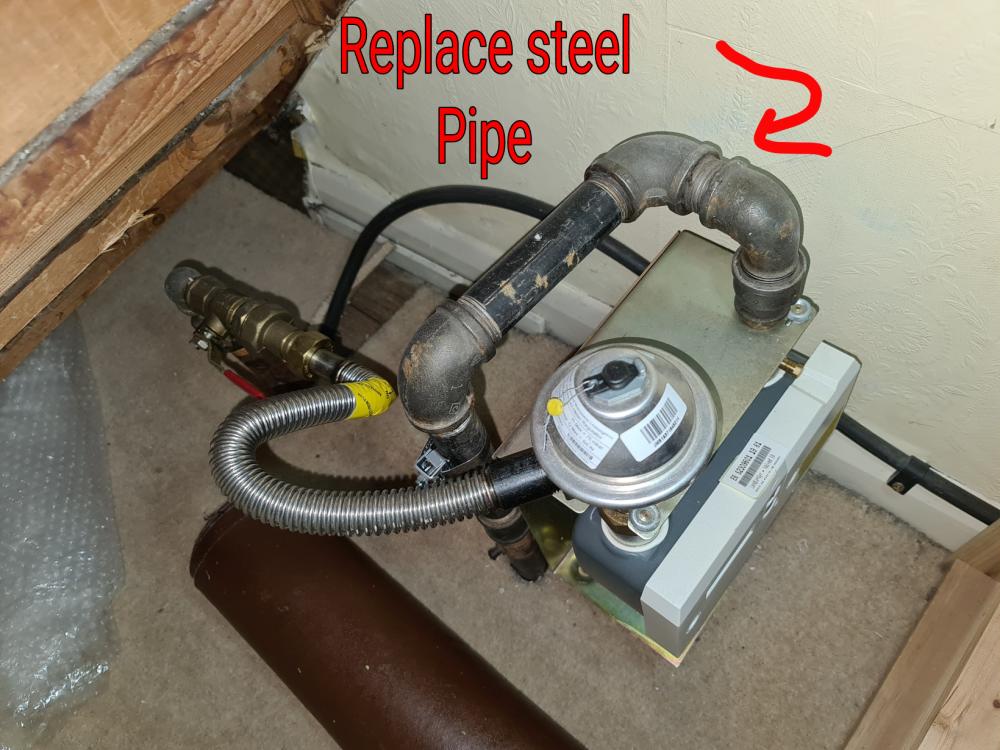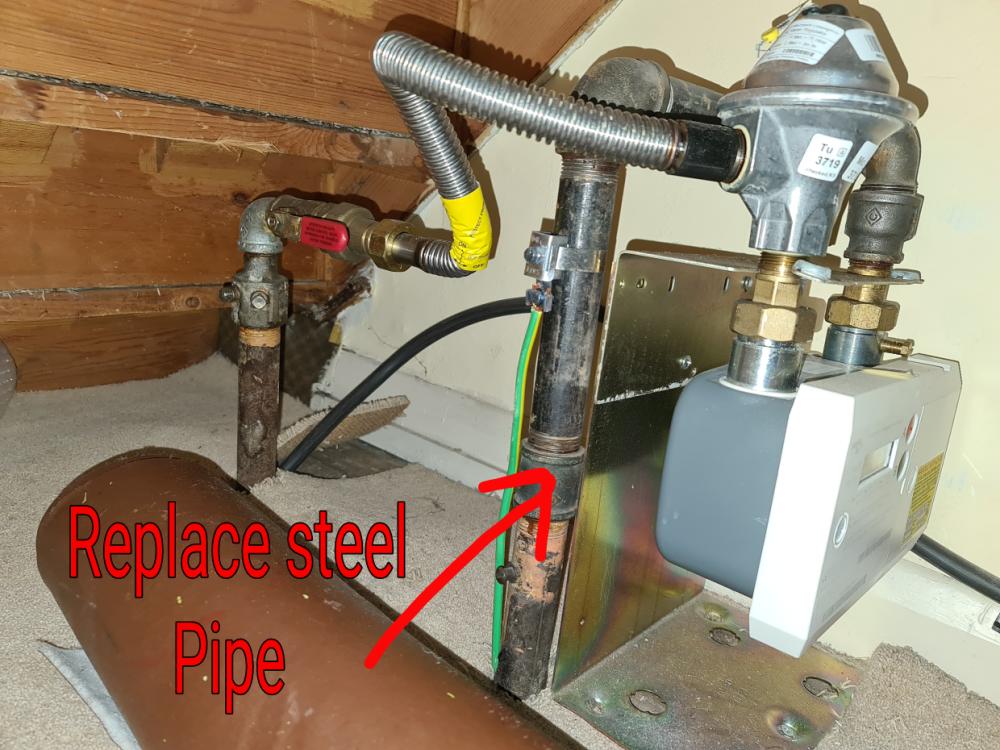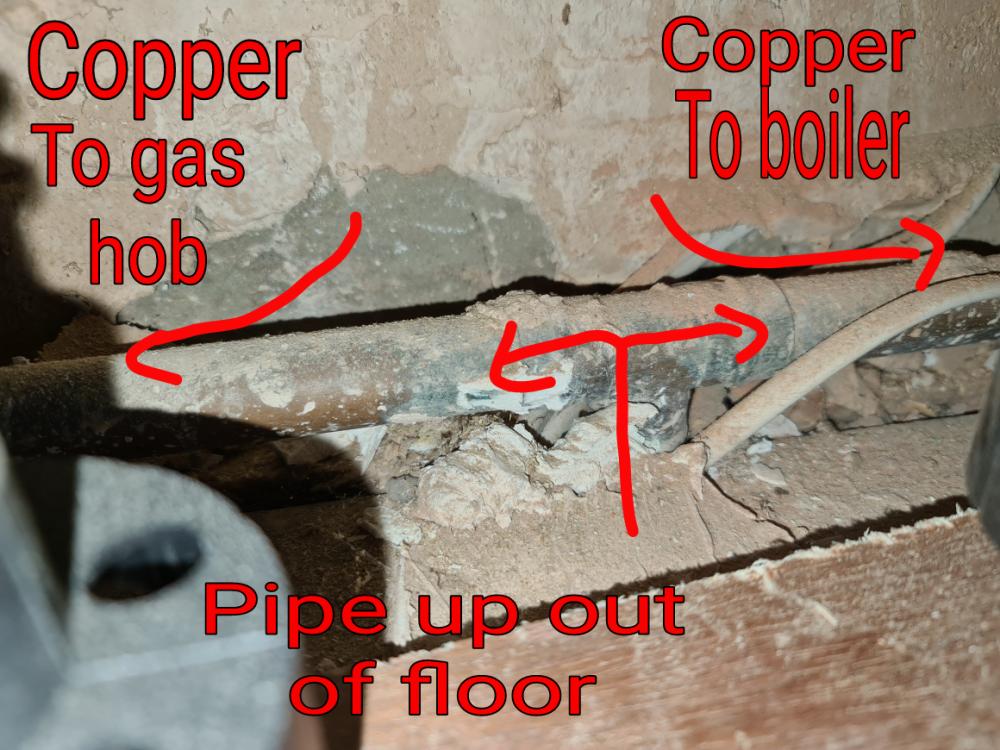Search the Community
Showing results for tags 'gas pipe'.
-
Hello. Our gas boiler insurer no longer covers our terraced home heating system because the gas pipe running from our meter to the kitchen is steel. It runs under our wooden ground floor and its length is about 15 feet with another couple of feet for the angled bits around the meter. Would having this steel pipework replaced with copper be very expensive? Our house is a 1930s terraced build. Please see the pictures. The last picture shows the gas pioework where it enters the kitchen and splits to the gas hob and the boiler. We have an option not to replace the pipe and get insurance with another insurer who dosent exclude steel pipework. The difference between the 2 insurers policies is £170 and £565. Any thoughts are very welcome. Thanks David
- 24 replies
-
My brother-in-law was discussing trying to prepare for the gas pipework route for his new kitchen. This is the pipework after the gas meter. He tells me that he thought it could run under the suspended timber floor if he used Tracpipe is this right? He is concerned as the only way around the building otherwise would be along the external wall down the side path exposed to possible damage. What's the regs on this?
-
My brother-in-law was discussing trying to prepare for the gas pipework route for his new kitchen. This is the pipework after the gas meter. He tells me that he thought it could run under the suspended timber floor if he used Tracpipe is this right? He is concerned as the only way around the building otherwise would be along the external wall down the side path exposed to possible damage. What's the regs on this?
-
When discussing the future kitchen design with brother-in-law the route of the gas main came up. Impossible to route gas pipe from main to boiler/cooker unless going through ceiling void or floor void. Can this be done?
-
Hello, We have started a new build and are soon to start laying services. The house is a PassivHaus and the floor structure is a concrete slab sitting on 300mm of insulation. Most of the services (water, electrics and telecoms) are coming into the house through ducts (blue, black, orange respectively) which then need to be made airtight (a headache as I understand). Using duct is great because we never liked the idea of services being set beneath the slab never to see the light of day again and impossible to do anything with if they leak / fail or if we need to upgrade etc. And, duct is relatively cheap and futureproof and with grommets, tapes, care can be made airtight. All great. But, we are struggling a little with the gas supply. The meter will be in a half-buried box at the front of the house and the boiler is some 8m away in a utility room. The current proposal by the plumber is to run copper pipe from the meter to the boiler below the slab + insulation. We trust the plumber and he is corgi qualified, but the idea of copper pipes with joints sat in the ground below 0.5m of concrete, steel and insulation doesn't sit particularly well. Does anybody know of any alternatives? Options we have discussed with the contractor are: Run the pipe on the external elevation and enter the building close to the boiler (but, there is limited space down the side of the house where the pipe would run). And, its a bit of an ugly and seems mad to run pipes around a new build house. Run the gas pipe in the french drain that runs around the house, perhaps in perforated duct, and then up through the building close to the boiler (again, as above, space is limited). But, aesthetically much better than option 1. Run the gas pipe in a duct under the floor, perhaps using TracPipe or similar. But, we understand this needs to be vented which may cause issues with airtightness. If the duct is non-perforated and we seal the duct to the airtightness later in the floor then cap externally, this could work. Otherwise, can we cap internally and vent externally? Move the meter inside into a meter cabinet and run the pipe in duct internally (as both ends of the duct are internal, airtightness is less of an issue). This would put the meter in a ground floor bedroom, which is not ideal. Move the boiler closer to the meter (but, current house layouts do not permit this). Of these options, number 3 would be ideal, then perhaps option 2. But, I wonder if there are other options we should discuss with the contractor? We would really appreciate peoples view on our preferred options or any other options that are robust (i.e. flexible / futureproof and pipe not set under a slab) and that comply with regs. Thank you in advance. DS





